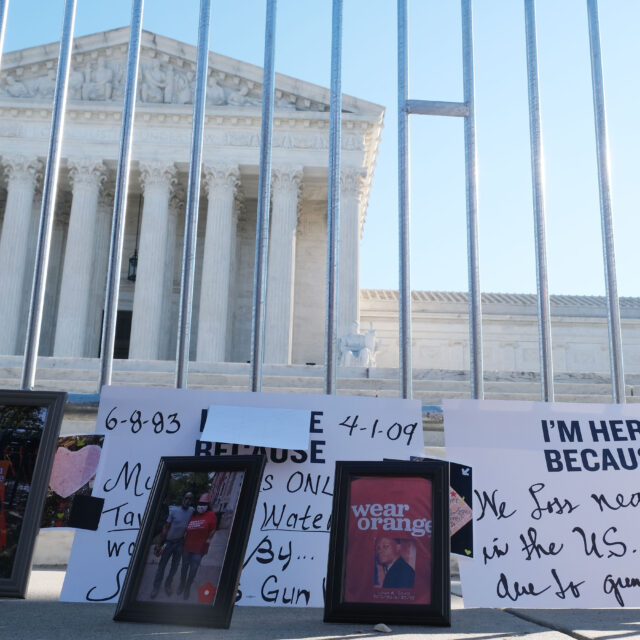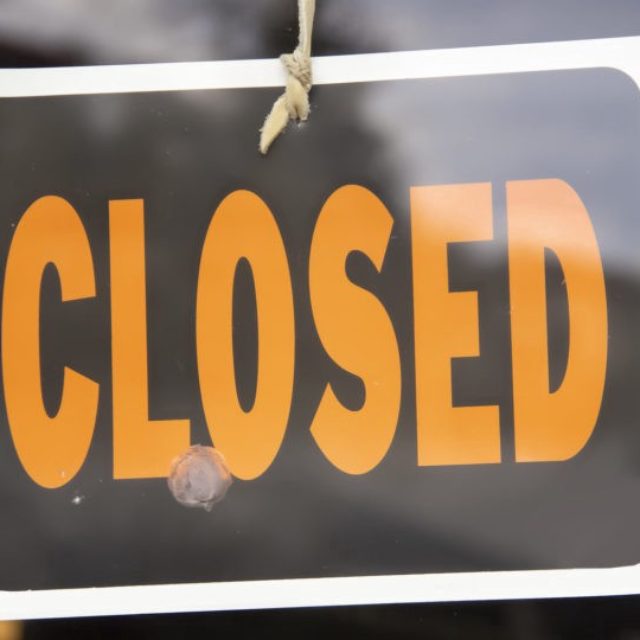Why the Gun Lobby’s Favorite Court Decision Is Wrong

5.28.2019
Prohibitions on large-capacity magazines do not violate the Second Amendment. That is what every federal court of appeals to address the question on the merits — the First, Second, Third, Fourth, Seventh, and D.C. Circuits — has held. It is also the view of leading constitutional scholars.
Alone on the other side is one recent, outlier lower court ruling, which has quickly become a favorite of the gun lobby: Duncan v. Becerra, decided by Judge Roger T. Benitez of the United States District Court for the Southern District of California. The Duncan decision, however, is riddled with factual and legal errors, and it should be reversed on appeal.
In Duncan, Judge Benitez held that California’s prohibition on the possession, purchase, sale, transfer, receipt, or manufacture of large-capacity magazines (LCMs) capable of holding more than 10 rounds of ammunition “unconstitutionally impinges on the Second Amendment rights of law-abiding responsible ordinary citizens.” Judge Benitez’sdecision is now on appeal to the United States Court of Appeals for the Ninth Circuit. But until it is reversed, it prevents California from fully implementing this evidence-based, common sense policy to combat gun violence, which social science research has found to be “the single best predictor” of a state’s mass shooting rate.
In the wake of Judge Benitez’s decision, the National Rifle Association and other opponents of gun safety laws have lauded the ruling as a model for Second Amendment analysis. In fact, the truth about the Duncan decision is quite the opposite, and Judge Benitez’s assertions and reasoning are fundamentally flawed in many critical respects.
- Judge Benitez premises his decision on the claim by plaintiffs’ expert that “there are 2.2 to 2.5 million defensive gun uses by civilians each year.” But this figure, and the methodology used to derive it, have been repeatedly debunked. As Dr. David Hemenway, director of the Harvard Injury Control Research Center has noted, “[t]his estimate is not plausible and has been nominated as the ‘most outrageous number mentioned in a policy discussion.’” In fact, the NRA itself uses a number three-times lower in its own advocacy materials. Moreover, in the recent case upholding New Jersey’s LCM law, the same expert Judge Benitez relied on in Duncan testified that he now estimated the current rate of defensive gun use as significantly less than his prior claim, but acknowledged that even that new estimate is a “guess for which [he] had no data at all.” And the most reliable, accurate data in this area, the National Crime Victimization Survey conducted by the Bureau of Justice Statistics, shows that the best estimate of annual self-defense gun use in the United States is only a tiny fraction of any of these numbers. Judge Benitez mentions none of this in his opinion.
- Judge Benitez also gets basic facts about some recent mass shootings flatly wrong. He states, for example, that the Parkland shooter used only 10-round magazines to carry out his attack at Marjory Stoneman Douglas High School (MSD). But that is false. In its official report, released nearly three months before the Duncan decision, the MSD Public Safety Commission made clear that LCMs were used, noting that “[e]ight 30- and 40-round magazines were recovered from the scene,” some of which “had swastikas etched into them.” And, months before the Commission released its report, a federal law enforcement official had already revealed that the Parkland shooter used only LCMs in killing 17 and injuring 17 more. Likewise, Judge Benitez’s assertion that news stories on last November’s mass shooting at the Borderline Bar and Grill in Thousand Oaks, California “do not report witnesses describing a ‘critical pause’ when the shooter re-loaded” is incorrect. Numerous news articles recount how survivor Matt Wennerstrom directed as many as “30 or 35 people” out of the bar to safety while the shooter paused to reload. There are even widely shared videos of Wennerstrom describing how he was able to help people escape the bar because of a “break in the shots” as the shooter reloaded. But, again, this information appears nowhere in Duncan. Indeed, this “critical pause” that Judge Benitez minimizes in his opinion is not rare at all in mass shootings. In last year’s Parkland shooting, too, lives were likely spared while the shooter paused to reload. In its recent decision upholding New Jersey’s LCM prohibition, the Third Circuit references additional such incidents, noting “concrete examples of intervention and escape permitted by pauses in reloading, including the episodes in Tennessee, Las Vegas, Florida, Newtown, D.C., Arizona, and Seattle.” And one month ago, further tragedy was likely avoided at the Poway synagogue shooting just outside Judge Benitez’s own city of San Diego, where one person was killed and three more were injured, when congregants were able to chase away the shooter “[d]uring a pause when [he] unsuccessfully attempted to reload his firearm.”
- Judge Benitez mischaracterizes, just as he had in an earlier opinion in this case, the findings from a 2013 survey of recent mass shootings published by Mayors Against Illegal Guns, part of Everytown for Gun Safety. Most critically, Judge Benitez assumes in his analysis of the Mayors’ survey that any mass shooting listed without information about magazine capacity did not involve an LCM. But there is no basis for this assumption. The reality of gun violence in America is that mass shootings are so frequent that this kind of information about magazine capacity is not available in every instance, and the survey expressly notes that. And, as Everytown’s most recent mass shooting analysis demonstrates, in incidents where magazine capacity is known, LCM use is unquestionably widespread. Indeed, another California federal district court, citing the findings of leading researchers in the field, noted that “[w]ithin the last thirty years, 86 percent of mass shootings involved at least one magazine with the capacity to accept more than ten rounds.” In its brief in support of the State, as well as in a brief submitted to the Ninth Circuit at a prior stage in this litigation, Everytown Law thoroughly explained where Judge Benitez went so wrong in his analysis of the Mayors’ survey. Yet again, however, the Duncan decision does not respond to, or even discuss, any of these points.
- Finally, and perhaps most troublingly, Judge Benitez refuses to acknowledge the well-established fact that shootings involving large-capacity magazines result in more injuries and more fatalities. He inexplicably states that this “may or may not be true.” But the evidence could not be clearer. Everytown’s most recent analysis of mass shooting data from 2009 to 2017 shows that of the 60 such mass shootings where magazine size was known, those that involved the use of LCMs led to 14 times as many injuries and twiceas many deaths. As the Second Circuit put it in upholding similar laws prohibiting LCMs in New York and Connecticut, “large-capacity magazines result in ‘more shots fired, persons wounded, and wounds per victim than do other gun attacks.’” It is thus no coincidence that, over the past decade, the five deadliest mass shooting incidents in America all involved the use of LCMs.
While there may be close questions under the Second Amendment, the validity of LCM prohibitions is not one of them. All six federal courts of appeals to have considered the constitutionality of LCM laws on the merits have upheld them under the Second Amendment. This amounts to 22 federal appellate judges, appointed by both Democrats and Republicans, who have voted to uphold LCM prohibitions. Judge Benitez’s error-filled and legally and factually indefensible Duncan decision stands alone on the other side. But likely not for long.
When the Ninth Circuit reviews Duncan later this year, it should join this unanimous circuit authority, reverse Judge Benitez’s ruling, and uphold California’s common-sense, life-saving measure. Everytown Law will continue to monitor developments, and provide updates and necessary rebuttals, as this case proceeds on appeal.





